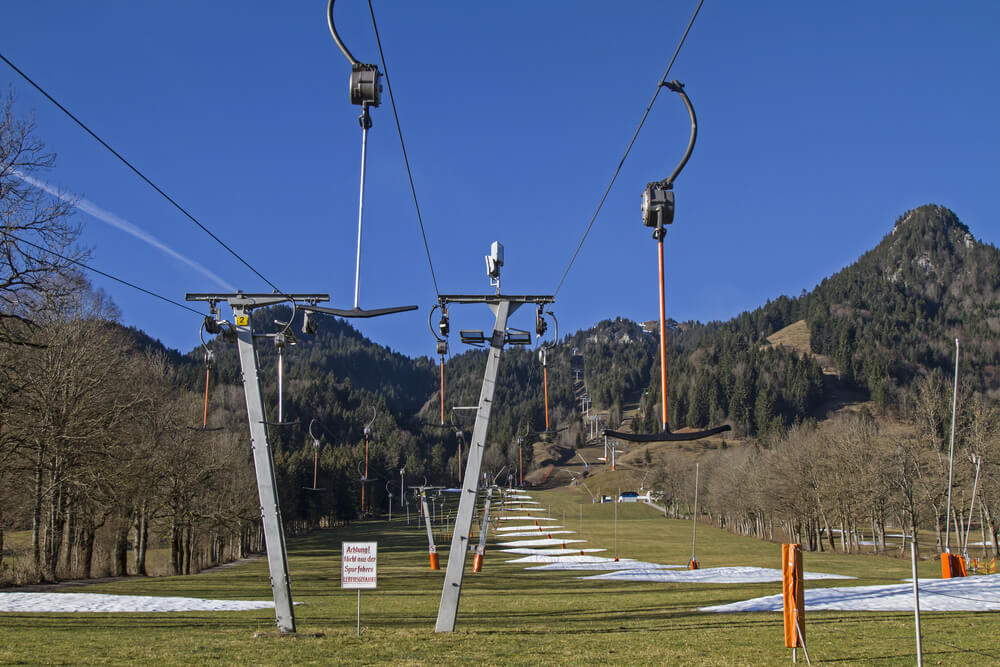There aren't many options left if you want to spend Christmas in a snowy setting. One sure option is to travel to Lapland, to Santa's home, because the chances of it snowing there for Christmas are over 90%. If you are from the US, Alaska is the only place where there will be a white Christmas.
Regardless of where you are during the holidays, there is a forecast of rain as a not-at-all-comforting compensation for the white holiday idyll, which has been following us for years.
The holidays come at the end of the hottest year on record, and this year will also hold that record during the holidays.
November was the sixth month in a row that broke monthly high-temperature records. With a 14.2 degree Celsius daily average, it was 0.32 degrees Celsius warmer than November 2020, the previous record holder.
The first 11 months of this year were 1.46 degrees Celsius warmer than the average recorded in the pre-industrial period, that is, 0.13 degrees Celsius higher than the warmest year of 2016.
The snow has also been leaving the mountains
Climate change has made almost all regions in the northern hemisphere permanently snowless regions during Christmas.
The mountains are still an exception, but they have also been increasingly snowless at this time of year. According to a European study, by the end of the century, there will be almost 3 months less snow in mountains above 2,500 meters per year, and in the lower regions, there will be only a few snowy days per year.
In Britain, the chance of a white Christmas is much lower today than in the 1960s, according to the Met Office, while average Christmas day temperatures are higher than a few decades ago in all parts of the country.
Because of climate disruption, winter is the season that warms up the fastest in the US
In Germany during the 1970s, there was an average of one white Christmas every third or fourth year. “With the average late December temperature increasing by about 1 degree Celsius, the odds for Christmas snow have decreased to about every 5 to 8 years”, said Peter Hoffmann from the Potsdam Institute for Climate Impacts Research.
Despite forecasters' reassuring words that the weather will be favourable for travel, the US National Weather Service reports that virtually no region of the country will see snow on Christmas Day.
Alaska is the only region where a white Christmas is traditionally guaranteed. This year, the snow will be close to the 1994 Anchorage record of 76 centimetres of snow depth.
Because of climate disruption, winter is the season that warms up the fastest in the US. New England, where winter temperatures have risen 5 degrees since 1970, is leading the way.
This statistic shows what we have been observing for years at Christmas - rain and slightly higher temperatures, not snow.
Scenes of New York covered in snow during the holidays from sugar-coated Christmas movie melodramas will remain just that - a part of the past that fits into movie fiction. The last time Central Park had more than an inch of snow was in mid-February 2022.
A new reality
The snowy Christmas magic is disappearing due to global warming, even though snowfall is a local weather event that requires several preconditions to coincide.
Global warming has raised the average temperature, thus reducing the crucial prerequisite for snowfall. Together, these have made winters warmer on average, with more rain and much less snow, but not without extremely low temperatures and snowstorms.
The romanticised image of snow-covered Christmas trees is nothing like the reality of winter in the Northern Hemisphere, including the holidays.
 In the temperate Northern Hemisphere climate, there is almost 3% less snowfall today than in the 1970s
In the temperate Northern Hemisphere climate, there is almost 3% less snowfall today than in the 1970s
In the temperate Northern Hemisphere climate, there is almost 3% less snowfall today than in the 1970s.
The lack of snow due to global warming has far more severe consequences than nostalgia for a snowy Christmas. About 2 billion people globally rely on water from melting snow, particularly in East Asia, where they get water from snow melting in the Himalayas and the Mediterranean from the Alps.
Due to less snow, the risk to their water supply is two-thirds higher than 50 years ago.
A long time ago, Bing Crosby sang "I'm dreaming of a white Christmas, just like the ones I used to know". His nostalgia was inspired by other motives, not climate change, which did not exist at the time.
However, it is still part of the white Christmas image today, along with TV commercials, Christmas cards and movies as a representation of the holiday that has faded with global warming.